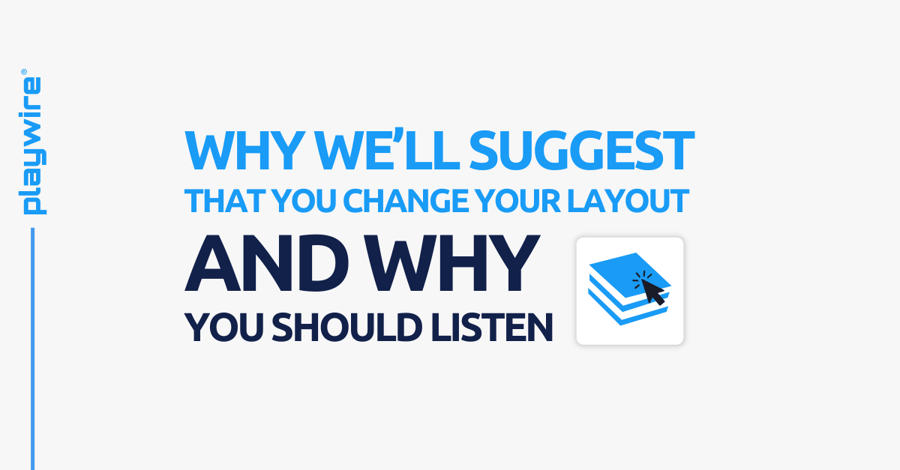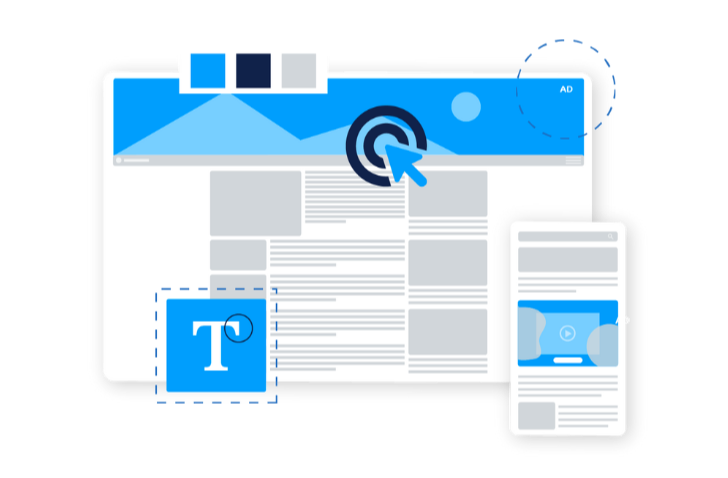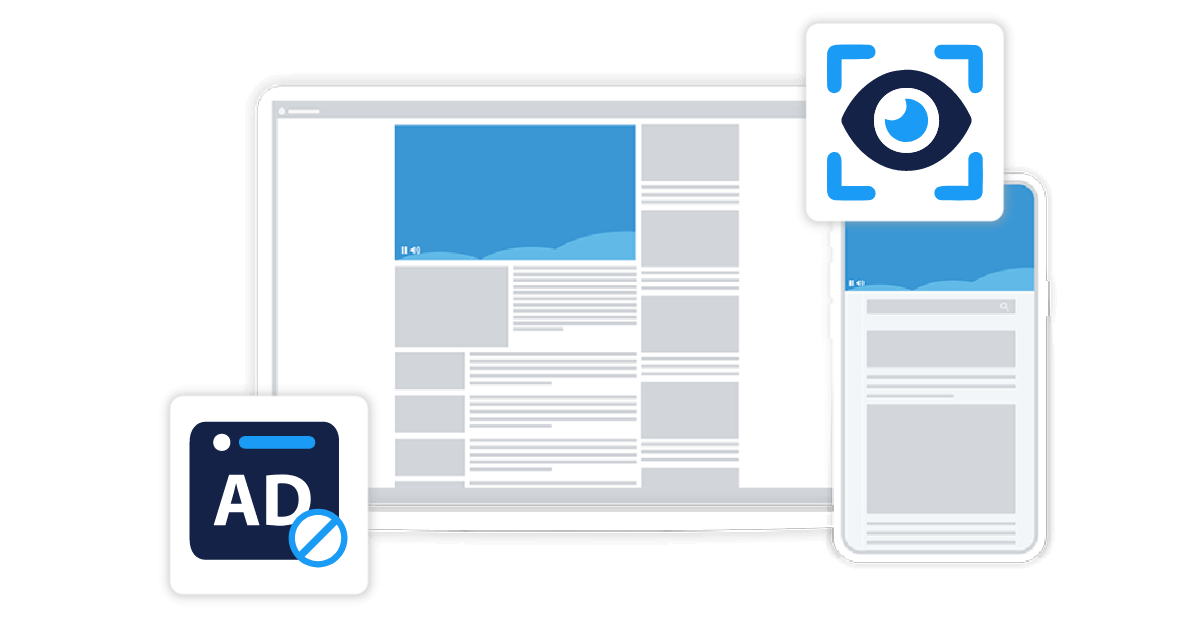Why We’ll Suggest that You Change Your Layout… And Why You Should Listen
October 11, 2023
Editorial Policy
All of our content is generated by subject matter experts with years of ad tech experience and structured by writers and educators for ease of use and digestibility. Learn more about our rigorous interview, content production and review process here.

It’s not uncommon for publishers to come to us from another provider and ask us to simply replicate an existing ad layout they’ve been using.
Simultaneously, the reason most publishers come to work with us is to make more money from their ads.
Not to put this too bluntly, but those are opposing priorities and they can’t, and shouldn’t, exist together.
A Real Life Comparison
Let’s say you hired a personal trainer and worked with them for some time without getting the results you were looking for.
As a result, you decide to hire a new personal trainer to see if they can help you get there. You would definitely not go to the new trainer and insist that they train you using the same program the first trainer designed.
It simply doesn't make sense.
So, why would you do it with your ad revenue?
-- Article Continues Below --
 Learn how Spelling Bee Solver saw an immediate 20% revenue uplift with Playwire.
Learn how Spelling Bee Solver saw an immediate 20% revenue uplift with Playwire.
It’s Our Job to Make You Money
Just like it’s a personal trainer’s job to help you increase your health and fitness, it’s our job to help you maximize your ad revenue. Plain and simple.
Ad layout is a huge part of that. Now, when we say this, you may be getting images in your head of “ad overload.” In no way are we going to push you to add a ton of ads to your page, creating an awful user experience.
Hint: that’s bad for your revenue (e.g. it would be bad for us too!).
Maximizing your revenue means:
- Maintaining good standing with Google and search engines (to bring as many eyeballs to your site as possible)
- Creating a user experience that encourages users to stay (meaning each set of eyeballs stays on your site for longer periods of time)
- Layering ads in intelligently to harmoniously balance all of those things
So, we’re going to 100% recommend ad layout changes if they would result in a better combination of user experience and revenue.
We’re NOT going to overload your site with ads.
Things Aren’t as Simple as They Seem
Just like with health, ad revenue isn’t as simple as it might seem.
Part of the reason you may not be getting results from your workout program could be related to diet. A good personal trainer will make sure you know how your diet could be negatively affecting your results, and give you tips on how to improve it.
Ad layout is no different. Ad revenue isn’t just the sum of how a set of individual ad units perform, it’s an intertwined, tangled mess of layout, user experience, ad injection logic, and so much more.
If we neglected to help you place your ads in the best placements to earn the most revenue, we would be failing at our job.
Read on to learn more about all of the ways ad layout can affect your revenue, and why you should probably listen to us when we suggest a change.
Layout is the MOST Important Factor in Determining Ad Revenue
As we mentioned before, there are quite a few factors that ultimately influence your ad revenue. But, without a doubt, the factor that has the biggest impact (and the most controllable impact) on your revenue is your layout.

Just like the saying “If a tree falls in the forest, does it make a sound?” you can ask yourself “If an ad is placed where nobody will see it, can it really earn a cent?”
This is exactly what buyers will ask themselves when valuing the ads on your site, and thus is the most important factor that determines what people will be willing to pay for said ad placement.
What kind of partners would we be if we didn’t advise you on the factor that has the most ability to control and influence your revenue?
Big Picture Thinking
It’s really easy to get drawn into an “ad unit” by “ad unit” small-picture view of the digital world, particularly if you are used to analyzing granular data to try and make decisions. But, getting too caught up in the small stuff can make you miss the bigger picture.
There are a few “big picture” concepts that get lost when thinking just about an individual ad unit.
Viewability
One of the most important metrics for ad revenue is viewability. You can learn all about the details of viewability here, but the basic definition is:
An ad unit must have 50% of the ad’s pixels in view of the user for at least 1 second to be considered a “viewable" ad.

Even this definition has you wanting to think on an ad unit by ad unit level, which can lead you down a too myopic path.
Website-Level Viewability: Your viewability is ultimately aggregated sitewide, taking into account pageviews (e.g. if you have a lot of pageviews on your article pages, that ad layout will more heavily weigh into your website-level viewability measurement).
This sitewide measure is what every tool in the ad tech ecosystem, and every buyer purchasing ads, is using to determine the value of your inventory.
Yes, friends, you are nothing more than a number to buyers, and that number is your website-level viewability number.
And, if you make your website-level viewability number better, guess what? The value of EVERY SINGLE PIECE OF INVENTORY on your site goes up. Meaning, every ad unit will do better if you can get your website-level viewability above a certain percentage.
And that means… a lot more revenue.
But, if you have a placement that's really bringing down that viewability number, it’s going to drag down the performance of every single ad unit.
One of the biggest reasons we’ll suggest a layout change is to influence a change to your overall website viewability metrics, making every ad unit on your site perform better. So, if we recognize a bad unit, we’re going to tell you to get rid of it or change it.
-- Article Continues Below --
The Complete Ad Viewability Resource Center
Session or Page Experience
Like most things in life, the whole isn’t always the sum of its parts.
The experience on your page isn’t just a sum of a bunch of individual ad units. It’s more like a harmonious dance between varying ad units to create an overarching experience. Just because you know the individual steps to a dance, doesn’t mean you can pull it off gracefully.
With the same set of steps, a professional dancer can create an entirely different final product than an amateur. The sum of the parts does not equal the whole.
Thinking ad unit by ad unit often creates a problem where you can’t see the forest for the trees. One small tweak to a single ad unit can create an entirely different page experience, one that might help all the rest of your ad units perform significantly better.
You should be thinking about how each session in total is generating revenue as well as each individual pageview, not just how each ad unit is generating revenue.
How do we do it? Ad units that are aware of each other and the world around them.
We don’t stick a bunch of independent ad units on a page. We build you a choreographed ad layout, with units that know exactly what every other unit on the page is doing. They make independent decisions about what to do with themselves based on what the others on the page are already doing. This creates the best overall page-level experience for your users, and maximizes topline revenue in the process.
One Size Fits All…But Does it Really?
Lastly, one of the most commonly overlooked aspects of ad monetization is the user themselves.
“Wait, what? But I’m incredibly focused on my user experience,” you might say.
And, to that I’d say, “You’re focused on the amalgamation of all your user experiences, not each individual user experience.”
Because, historically all the tools in your toolbox have only ever allowed for you to measure and cater to the “average” of all your user experiences, this makes complete sense.
But what if you didn’t have to?
What if you could alter the way your ads behave to maximize the effectiveness of monetization for each individual user, whatever their individual behavior might be?
This is where ad injection logic comes in. If we were to mimic your setup exactly, we’d do everything you’ve done before. Which is to create the same ad experience for every user by placing ads in the same places on the page for every session.
Our ad injection logic isn’t bound by the same physics as other providers. We don’t have to think that way.
Instead, our technology can take into account things like scroll behavior, browser size, and so much more, and use that information to customize the way ads are called and served.
But, we can only give that to you if you use our ad units, laid out in a way that makes sense to utilize that functionality. We can’t do it if you are myopically focused on making us use the same ad units you used somewhere else.
And so, again, the reasons we’ll push you on ad layout are to give you the ability to take advantage of these advancements.
So, Why Should You Listen?
It's actually quite simple. You should listen because we care about the things you care about:
Because we want to make you more money.
And we want to preserve your user experience at the same time (maybe even improve it).
And isn’t that why you came to us?

-1.png?width=800&height=157&name=1-playwire-logo-primary-2021%20(1)-1.png)




